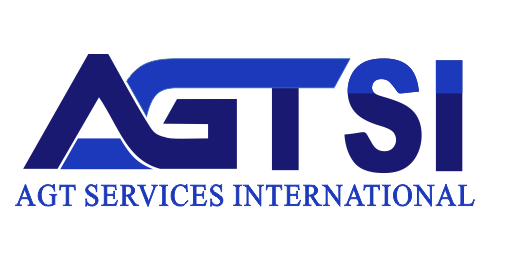Have you heard of the STAR method? It might be just what you need to ace your job interviews. If you struggle with telling clear and concise stories under stress, STAR can help. STAR stands for Situation, Task, Action, and Result. It’s a simple way to structure your answers to questions like “Tell me about a time when…” making sure you include all key details and keep your response focused.
In this article, we’ll break down how to use the STAR technique, explore its benefits, and offer tips to help you master it. With STAR, you can give impressive and well-structured answers that highlight your skills and experiences, helping you stand out to potential employers and shorten your job search.
What is Star Interview Technique?
The STAR interview technique helps job seekers explain their experiences clearly in interviews. STAR stands for Situation, Task, Action, and Result: describe the context, role, the steps taken, and the outcomes. This method makes it easy to give focused answers that show interviewers how to handle situations. It helps them see how well you might fit the job. This article will explain the STAR technique, its benefits, and tips for using it to impress in the next interview.
- Situation: Set the scene and give the necessary details of your example.
- Task: Describe what your responsibility was in that situation.
- Action: Explain exactly what steps you took to address it.
- Result: Share what outcomes your actions achieved.
RECOMENDED: How to Ace Your Job Interview with Saudi Employers?
How to use the STAR method for interviews?
The STAR interview technique is a structured method used by job seekers to answer behavioral interview questions. STAR stands for Situation, Task, Action, and Result. Here’s how to use it effectively:
Understand the Concept:
Behavioral interview questions are made to see how you marketed things before because that can show how you might do in the future. The STAR technique helps you answer these questions clearly and simply. STAR stands for Situation, Task, Action, and Result. It enables you to explain the situation, what you had to do, what action you took, and what happened as a result. Using this method makes your answers easy to understand and shows how you handle challenges. So, remember STAR when you’re asked about your past experiences in interviews!
Identify Examples:
Before your interview, take some time to think about questions that ask about how you’ve acted in different situations. For example, think about times when you had to solve a problem, work with others, show leadership, or overcome a tough situation. Remember, the interviewer wants to hear real stories from your past experiences that show off your skills and what you can do. So, be ready to share examples that highlight your strengths and abilities. It’s like telling a story about yourself that shows why you’re the right fit for the job.
Structure Your Response:
- Situation: Begin by briefly describing the context or situation you were in. Provide enough detail for the interviewer to understand the scenario.
- Task: Explain the specific task or goal you needed to accomplish in that situation. What were you responsible for?
- Action: Describe the actions you took to address the situation or task. Focus on what you did, not what your team or others did.
- Result: Share the outcome of your actions. What happened as a result? Try to quantify the results if possible (e.g., increased sales by 20%, resolved customer complaints by 90%, etc.).
Practice:
Try practicing how you answer behavioral questions using the What is Star Interview Technique and How to Use It?. That means thinking about a Situation, the Task you had to do, the Actions you took, and the Results you achieved. Keep practicing until you feel confident and can explain your examples well. It’s like rehearsing for a play – the more you practice, the better you’ll get! By using the STAR technique, you’ll be able to tell your stories in a clear and organized way, showing off your skills and experiences effectively during interviews. So, keep practicing, and you’ll be ready to shine when the big day comes!
Be Concise:
It’s important to give plenty of information, but remember not to talk too much or stray from the main topic. Keep your answers short and stick to the important points. When you’re concise, it’s easier for others to understand what you’re saying. Also, it shows that you respect their time. So, keep it clear and to the point, and you’ll get your message across effectively.
Tailor Your Examples:
Use examples that match the job you want. Show off skills and experiences that fit what the job needs. For example, if you’re applying for a job in customer service, talk about times when you helped customers solve problems. This shows you have what it takes for the job. It’s like matching puzzle pieces – the better they fit, the clearer the picture. So, make sure your examples match what the job is looking for. This way, you stand out as the perfect fit!
Listen Carefully:
During your interview, pay close attention to the questions the interviewer asks you. If they ask about your behavior in certain situations, use the What is Star Interview Technique and How to Use It? to answer. This means you should talk about the Situation, Task, Action, and Result. First, explain the situation you were in, then describe the task you had to do. After that, talk about the action you took to solve the problem, and finally, share the positive result of your actions. Using the What is Star Interview Technique and How to Use It? helps you give clear and structured answers that show how you handle challenges and achieve success in your work.
Ask for Clarification if Needed:
If you’re not sure about something, it’s okay to ask questions to make sure you understand before you answer. It’s better to be clear than to give a wrong or unclear answer. Asking for clarification helps you provide the best response possible and shows that you care about getting things right. So, don’t hesitate to ask questions when you need to – it’s a smart way to make sure everyone’s on the same page and avoid misunderstandings.
RECOMENDED: 10 Tips to Avoid Interview No-Shows
STAR method example answer
S – Situation:
In my last job as a project manager, I was in charge of a team. Our job was to put in place a new computer program for a client. It was a big project with lots of different people involved and not much time to finish it. We had to work hard to get everything done on time.
T – Task:
My job was to make sure the project was finished on time and within the budget. I also had to keep the team excited and on track to reach our goals. It was important to keep everyone motivated and working together. So, I checked our progress regularly and helped out whenever needed. Keeping everyone happy and focused was a big part of my role.
A – Action:
To make it happen, I did a few things. First, I made sure we met as a team often to talk about how we were doing, figure out any problems, and come up with ways to fix them together. I gave everyone tasks based on what they were good at and made sure they knew exactly what to do. Also, I kept talking to the clients, letting them know how we were doing and fixing any problems they had right away. When things didn’t go as planned, like if there were delays or technical issues, I stayed calm and worked with the team to find new ideas to solve the problems and keep the project going smoothly. It was all about teamwork and staying cool under pressure!
R – Result:
Thanks to our hard work, we finished the project earlier than expected and spent less money than planned. The client was really happy with what we did and said nice things about how we worked together and how dedicated we were. This made us feel good about our team and helped us work even better on future projects. It was a win-win situation for everyone involved!
RECOMENDED: How to Ace Interviews with the STAR Method [9+ Examples]
Final Thoughts
In short, the STAR interview technique helps give clear and useful answers during job interviews. By following the steps of Situation, Task, Action, and Result, you can tell organized and impactful stories about experiences. To use STAR well, understand the method, prepare examples, practice answers, and keep them concise and relevant to the job. This What is Star Interview Technique and How to Use It? helps show skills and achievements clearly, making you stand out to employers.



















